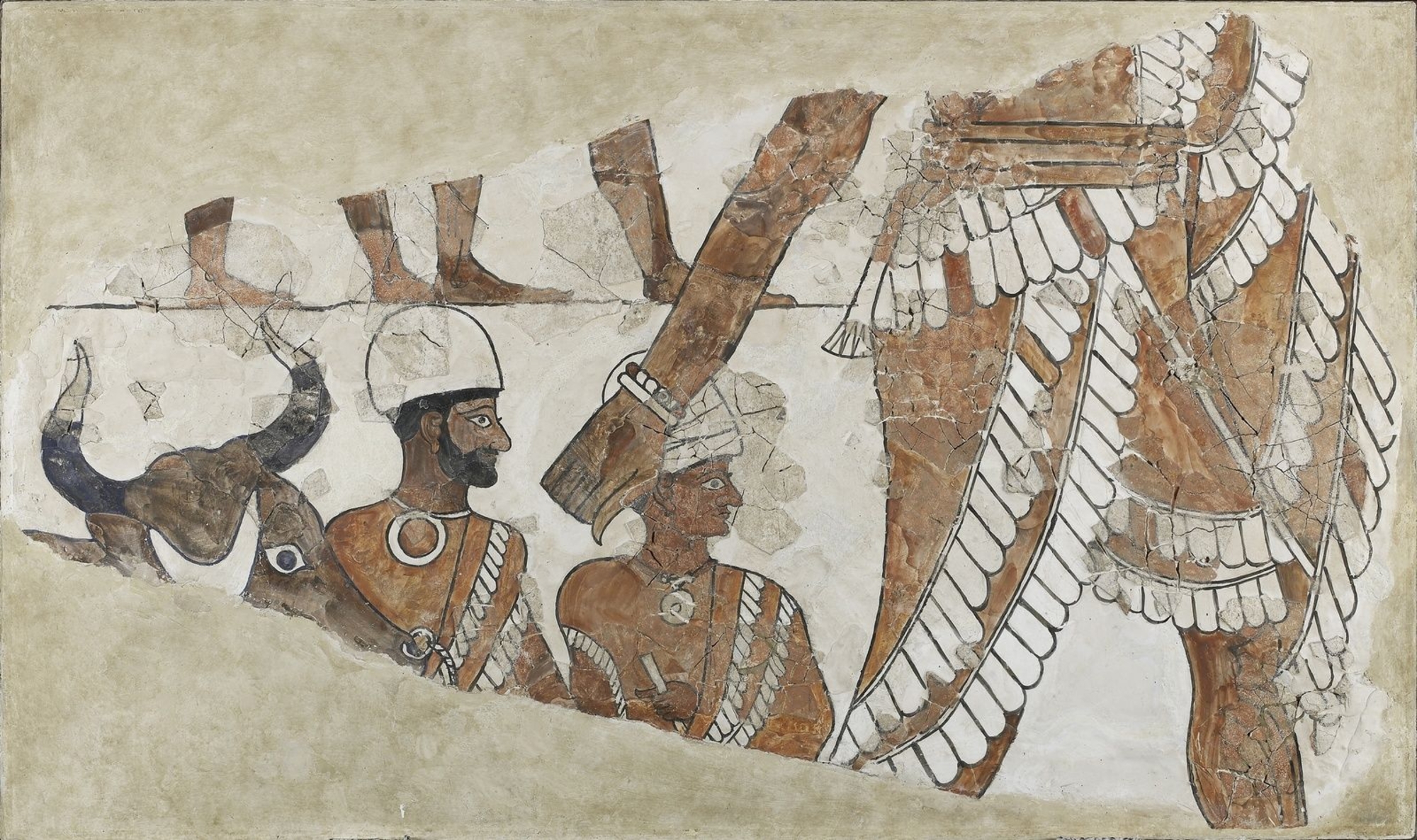
- Home
- The Great royal palace of Mari
- Les peintures du palais
Besides the king's private reception room (Area F of the palace), where the themes are exclusively secular – the king defeating his enemies, receiving tributaries, as a lion hunter, during celebrations – the areas painted with figurative scenes depict the sovereign in a more or less close relationship with the gods.
The court of the palms
The court of the palms (Court 106) had two sets of paintings. The Investiture painting, named after the subject of the upper central panel, is a triptych which, through a skilful use of doubling and rebating, depicts the court itself, while the two goddesses of gushing waters are foretokens of the statue found at the foot of the podium in Room 64, a transitional space leading towards Throne room 65. This is probably where the ceremony took place in which the king touched, as in the Code of Hammurabi, the rope and staff, the insignia of power, which the goddess Ishtar is holding out to him as she places her foot on her attribute animal, the lioness.
The vast compositions covering the whole of the upper section of the canopy have only survived as fragments, and although the types of figures represented suggest themes known in Syro-Mesopotamian iconography, their precise arrangement remains a subject of debate.
The large sacrificial scene (scene B), on display in the Louvre, would have been completed by a piece in a similar vein in the National Museum of Aleppo in which the king walks at the head of a procession arranged over two superposed registers where the bulls, adorned with silver for the sacrifice, are led by dignitaries.
Isolated amid several deities with anthropomorphic, zoomorphic and hybrid forms in the Investiture painting, the royal figure to a certain extent frees himself from divine tutelage in the palace’s later pictorial works, where the divine presence is limited to astral symbols.






